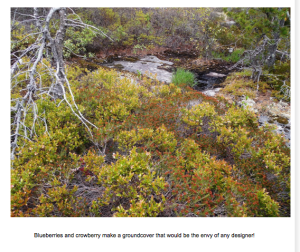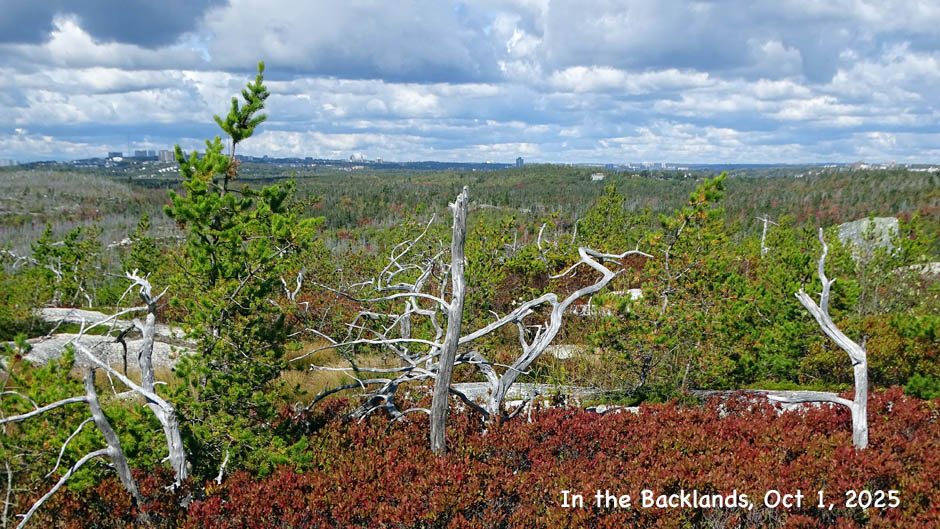“Priority Plant Species” are those which would be cited in Environmental Assessments and equivalent Processes.
Priority Species and Habitats to be considered:
The proponent must consider and evaluate those Wild Species identified in the three priority lists indicated below. Through the development of lists of species for eachtaxonomic group (i.e. birds, mammals, fish, plants, etc.), the proponent can determine which, if any, priority species are known to occur within the broad geographic area where the development is located (i.e. Cape Breton Island, South-west Mainland Nova Scotia, etc.).1) Committee on the Status of Endangered Wildlife in Canada (COSEWIC) and the Federal Species-at Risk Act (SARA 2003): Proponents must consider all species listed as Endangered, Threatened, or of Special Concern.
2) Nova Scotia Endangered Species Act (NSESA 1999): Proponents must consider all species listed as Endangered, Threatened, or Vulnerable.
3) Nova Scotia General Status of Wild Species: Proponents must consider all species designated as Species of Conservation Concern (Red or Yellow).
In our study of the Williams Lake Backlands (now the Shaw Wilderness Park), Nick Hill and I found three species with S Ranks of 3 or less (S3=Vulnerable, S2=Imperilled, S1 = Critically Imperilled):
- Golden Heather (Hudsonia ericoides) S2
- Mountain Sandwort (Minuartia groenlandica, S2
- Burnt Sedge ( Carex adusta) S3/S2
All were found on recently burnt Jack Pine-Crowberry barrens, underscoring the special conservation value of these communities and their dependence on recurrent fire.
While Broom Crowberry (S4) and Jack Pine (S4) are not Priority Species on their own, the plant communities in which they both occur are ‘Nationally Unique and Globally Rare’.
The combination of Jack Pine, an iconic boreal species, and broom crowberry, an Atlantic Coastal Plain dwarf shrub of the heather family, is found within Canada only on scattered rocky outcrops near the Atlantic coast of Nova Scotia. It occurs only sparingly in similar habitats in Maine, where it overlaps with the globally rare Pitch Pine/Broom Crowberry association. Nova Scotia’s Jack Pine/Broom Crowberry Barrens are likewise globally rare. – From (Hill and Patriquin 2014, p 74; see also Appendix C in that document: Jack Pine/Broom Crowberry Barrens: their occurrence and status as a recognized plant association.
The Jack Pine/Broom Crowberry association is formally recognized in the Canadian National Vegetation Classification System as “one of three subassociations, A301B in the Association A301 Pinus banksiana/Gaylussacia baccata-Empetrum nigrum/Sibbaldiosis tridentate/Cladina spp. Woodland (Jack Pine/Black Huckleberry – Black Crowberry/Three-toothed cinquefoil/reindeer Lichen Woodland)” (Sean Basquill. personal communication).
Unfortunately, while we are slow at listing more candidate species on the Endangered Species list for NS and federally, we are even slower at developing lists and protocols for protection of associations of plant species. British Columbia is perhaps the most advanced in this regard, with some protection applying to particular ‘ecosystems” (functionally, in most cases those are defined by combinations of particular plant species) as well as to individual species (Link).
Interestingly, and relevant to the conservation values of our Jack Pine-Crowberry barrens, the equivalent Pitch Pine – Broom Crowberry Association on coastal rocky outcrops in Maine (the “Pitch Pine / Broom Crowberry Woodland”) is considered Globally Imperilled.
LINKS: Related to Jack Pine-Broom Crowberry Barrens
– Golden Heather in flower in the Backlands 30Jun2023
And some thoughts about what’s involved in keeping it around.
Post by David Patriquin on backlandscoalition.ca, June 30, 2023
– Rare Jack Pine – Broom Crowberry barrens
Post on backlandscoalition.ca, Mar 29, 2014
– November flowering of Mountain Sandwort on our Jack Pine – Crowberry Barrens
Posted on November 15, 2022
– Forest Vegetation types – OW1
OW1 — Jack Pine / Huckleberry / Black crowberry / Reindeer lichen
Pinus banksiana / Gaylussacia baccata / Empetrum nigrum / Cladina spp.

Photo and caption in Panayoti Kelaidis blog post “Blueberries and crowberry make a groundcover that would be the envy of any designer!”
– Backlands to some, heart lands to others
Blog post on Prairiebreak by Panayoti Kelaidis, Senior Curator and Director of Denver Botanic Gardens Outreach on his visit to the Backlands in May of 2014. Also available here as a PDF “…More than anything, I kept thinking “Japanese Garden” as I looked around the area–the gnarly little jackpines and the rich texture of groundcover could easily be tweaked to create a heavenly Japanese garden if one wished to do so: why bother–I prefer what’s already here!” There is aRelated post on backlandscoalition.ca on June 3, 2014.
LINKS: On Classification of Plant Associations, Ecosystems etc.
– The EcoVeg approach in the Americas: U.S., Canadian and International Vegetation Classifications
Don Faber-Langendoen* et al., 2017 in Phytocoenologia. “The purpose of the EcoVeg classification approach is to describe the diversity of terrestrial ecosystems across the globe and inform decisions about conservation and resource management. The approach provides the scientific basis for the U.S. National Vegetation Classification, Canadian National Vegetation Classification and NatureServe’s International Vegetation Classification, and has encouraged international and national collaborations elsewhere in the Americas. The approach is global, but most advanced in the western hemisphere, especially the U.S. and Canada. EcoVeg provides a consistent thematic framework to support extensive vegetationmapping across the U.S. and Latin America. The approach provides an 8-level hierarchy for natural types, with three upper (formation) levels, three mid (physiognomic-biogeographic-floristic) levels and 2 lower (floristic)levels, and a separate 8-level hierarchy for cultural types. Types are maintained through a review board to ensure consistent definition…” Viuew ESA Blog post by By Eliza Oldach, Spring 2018
NatureServe Explorer- Search for Species and Ecosystems
Conduct searches of their database by Search Term (e.g. Corema conradii) X Species &/or Ecosystem X Location- United States, Canada, Mexico (to date).
A search for Corema conradii x Ecosystem x Canada: 0 records found.
A search for Corema conradii x Ecosystem x United States: 2 Association Records:
– Pinus rigida / Corema conradii Woodland (Association)
– Pinus rigida – Quercus marilandica / Corema conradii Scrub (Association)Features of the latter overlap with many of those of our “Jack Pine-Broom crowberry Barrens”, except that Pinus rigida is the corresponding fire-stimulated pine, and it (the P. rigida Association) occurs on dry sandy soil rather than on thin soils over bedrock.
| The Canadian National Vegetation Classification: Principles, Methods and Status Baldwin, K et al., 2019. Natural Resources Canada document> ‘The Canadian National Vegetation Classification (CNVC) is an ecological classification of natural vegetation communities in Canada. Using eight hierarchical levels, it provides a nationally standardized framework for describing vegetation patterns within their ecological contexts at multiple conceptual and spatial scales. Natural Resources Canada, Canadian Forest Service (NRCan – CFS) has led the development of the CNVC since it began in 2000, working primarily on forest and woodland communities, and mainly at two levels of the hierarchy, the mid-level Macrogroup and the stand-level Association. CNVC development relies on partnerships with provincial and territorial government agencies for regional ecological expertise and data, and benefits from international collaborations for comparisons with other national classifications. This report introduces the CNVC, including its rationale, history and partnerships; presents the classification framework (hierarchy); documents methods employed to 2018 for the development of types, including information sources and the bioregional expert review process; and describes the products to date, available on the CNVC website (cnvc-cnvc.ca/) and the Natural Resources Canada – Canadian Forest Service Publications website (cfs.nrcan.gc.ca/publications). Developing and maintaining a national classification framework requires considerable resources, and ongoing funding is needed to sustain the effort summarized here*.* Bolding inserted. In correspondence with a NS Government biologist in 2022, I was told “The CNVC is no longer being led by CFS. Without that support, the initiative has stalled… There have been proposals to revive it, although it’s unclear whether that will happen.” |
